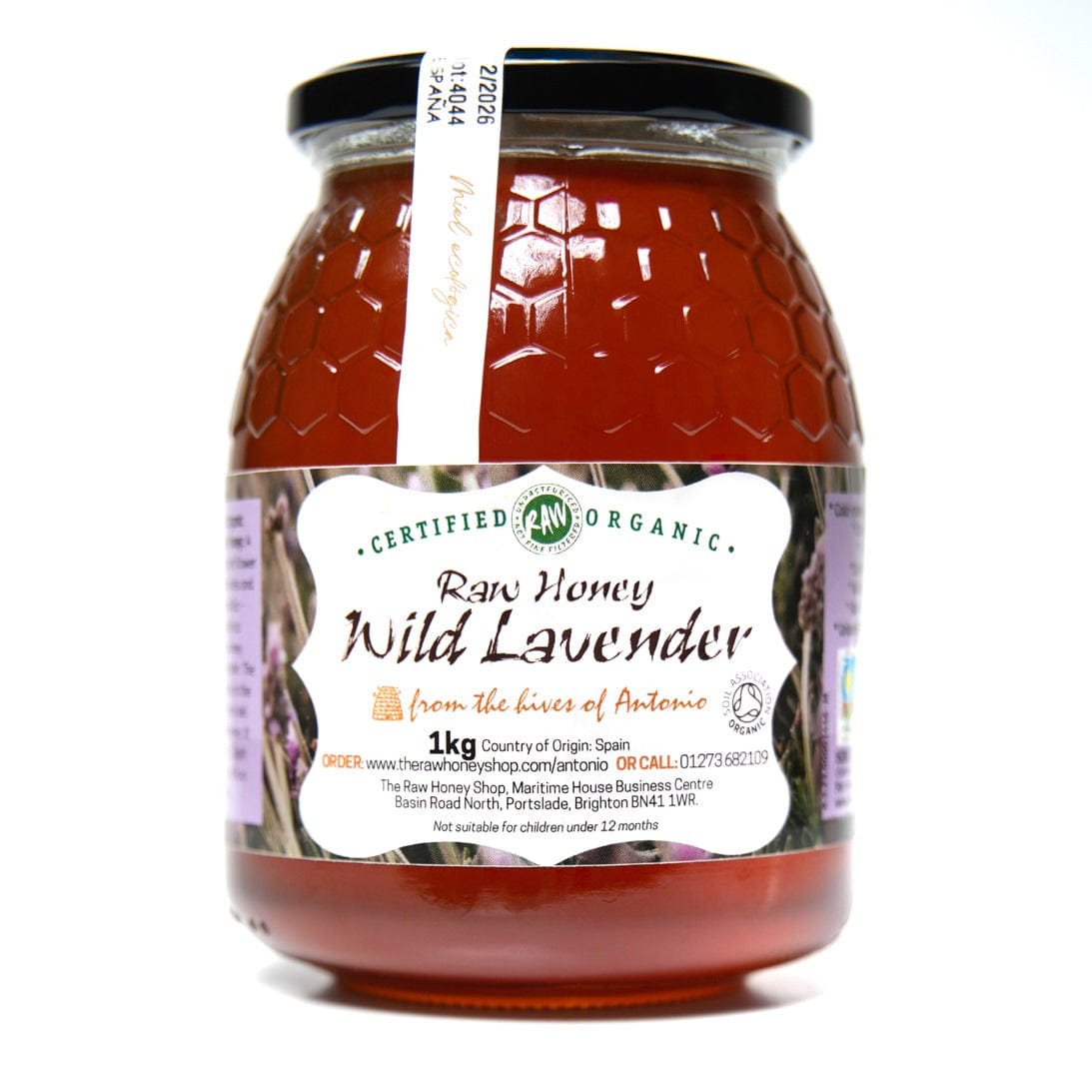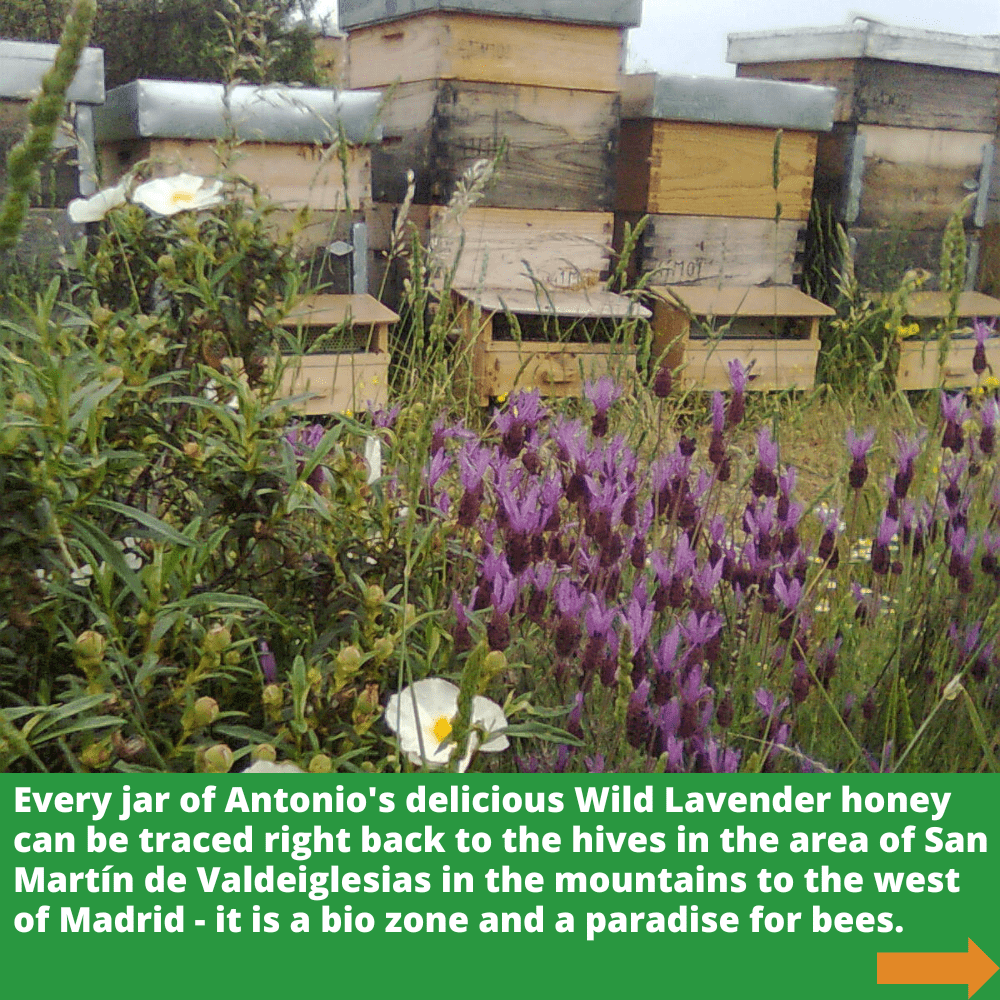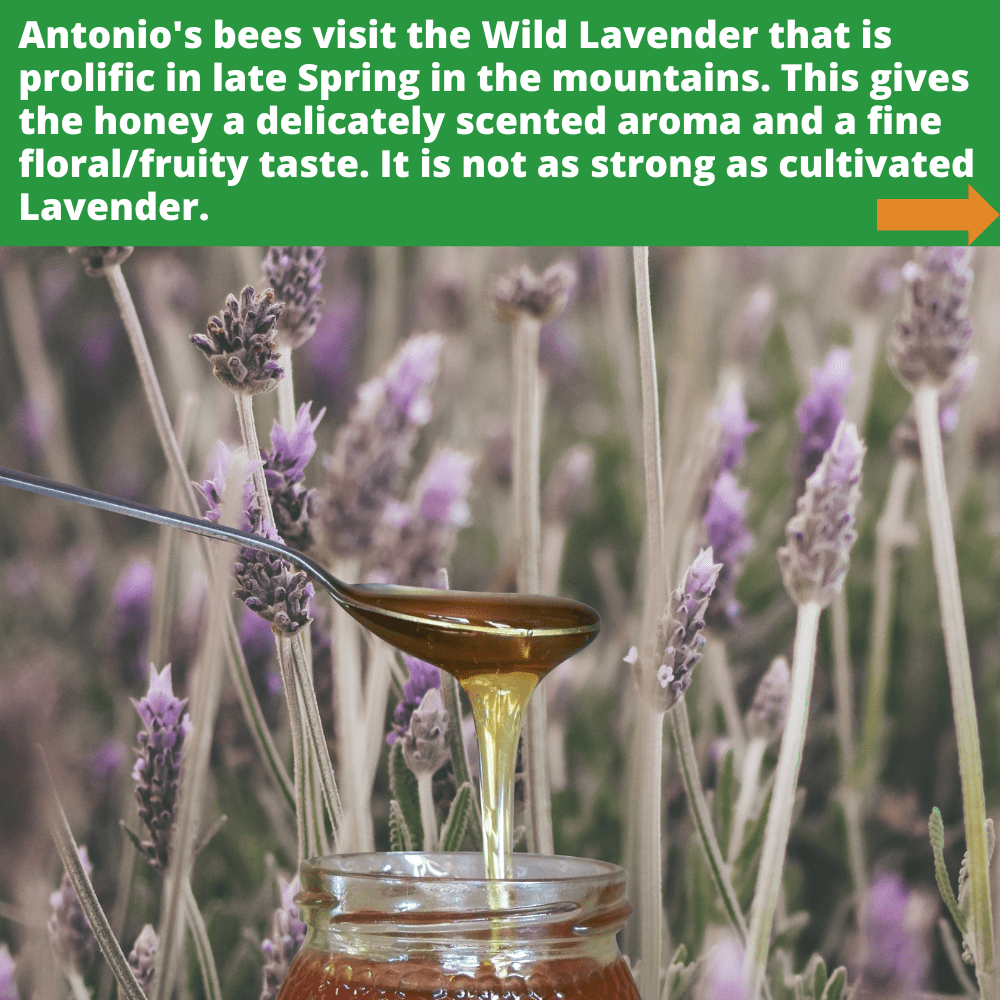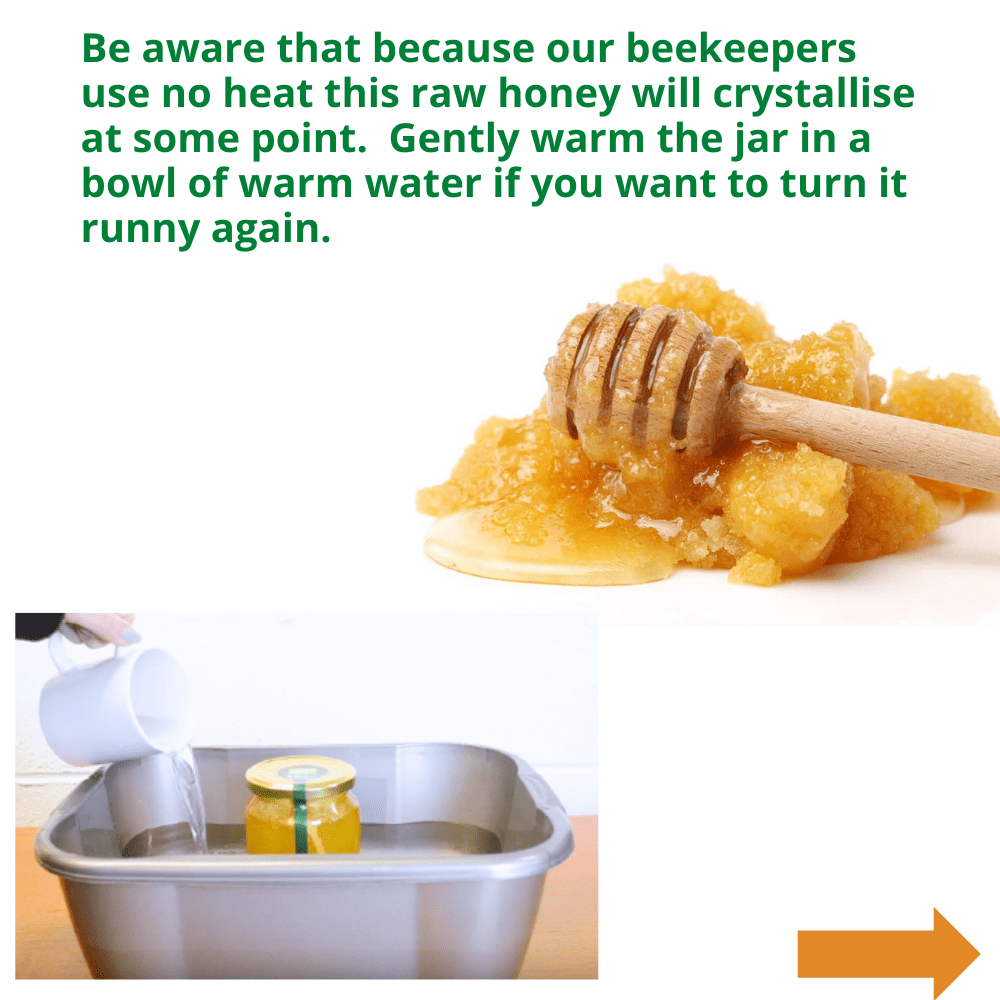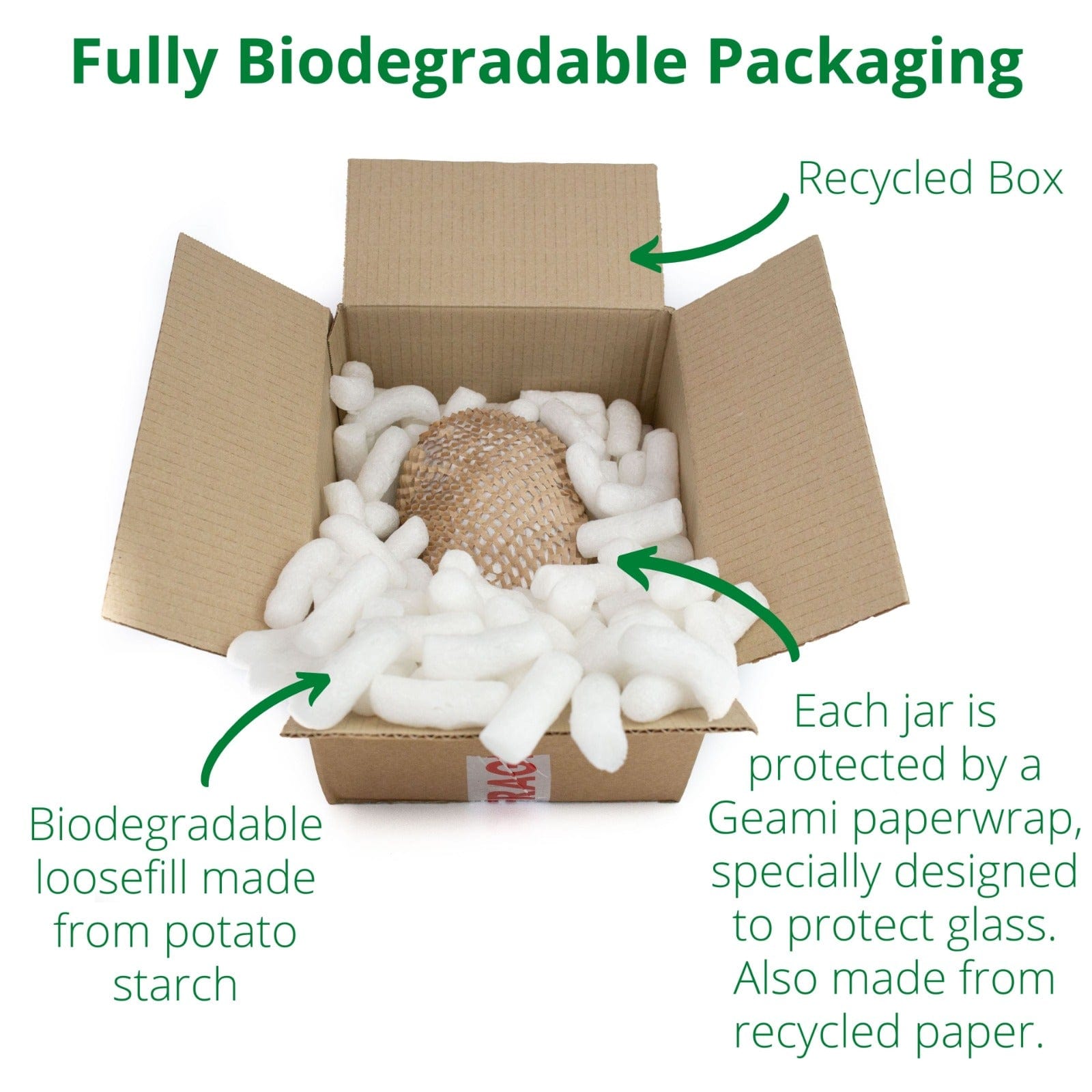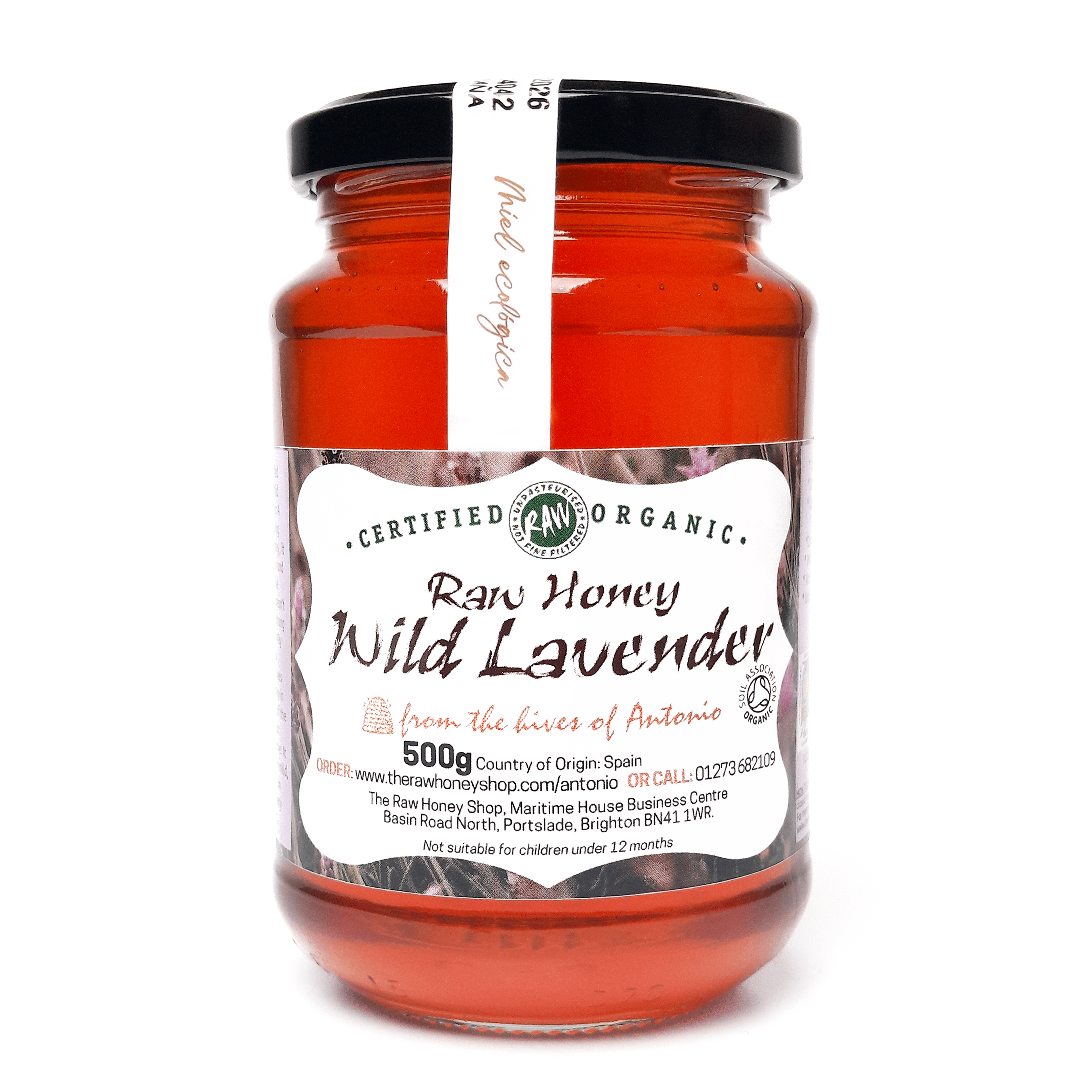Raw Certified Organic Wild Lavender Honey Runny
- Regular price
- GBP 25.99
- Sale price
- GBP 25.99
- Regular price
-
GBP
Antonio's Raw Organic Wild Lavender honey is a light and pleasing herb flower honey, it has floral notes and a creaminess like vanilla - but doesn't have quite as strong a flavour as honey from cultivated lavender.
This honey comes from bees feeding on the wild lavender bushes in Spain. It is different from the tree sap honey which is often dark in appearance and strong in taste, this honey tends to be very mild, light and softer in taste.
Colour: This particular honey is a light shade of orange, going a creamy light brown colour when set.
Where does the honey come from? This variety of wild lavender honey comes from the northern mountain ranges of Madrid in Spain known as Sierra De Guadarrama.
Who produces the honey? The bees of Antonio Simon, a 4thgeneration beekeeper who takes pride in producing honey in a traditional way without adding or taking away anything. Antonio's hives are mainly based in the mountain ranges of north of Madrid. His beekeeping practices and the land he has his hives on have been certified as organic by the Committee of Organic Agriculture in Madrid
Any information about the plant the honey comes from? The wild lavender plant is a herbaceous perennial shrub, sometimes known as cantueso in Spanish. You find it growing everywhere on mountain sides and the uncultivated common land that is so widespread in Spain. The oil from lavender is widely used as an essential oil in aromatherapy, because it is said to aid relaxation and sleep.
Common Uses: Wild lavender honey is good for protecting and soothing abrasions and burns (although obviously see your doctor if it is a bad abrasion or burn). It is also especially good poured over cheese! And because it is so mild children love it on its own and appreciate the subtle taste.
More Wild Lavender honey facts: The Greeks and Romans used it to scent their baths and their linen. The word lavender is from the Latin verb lavare, which means to wash. Wild lavender honey is a favourite of many due to its beautiful delicate flavour. It is said to assist in a good nights sleep if used in a pillow.
What our customers say
We are very pleased with your service, we have just opened our jar of Antonio's Lavender raw honey and the aroma and taste is exceptional. The best we have ever had. William, Cheshire
So called 'healthy options' still have all kinds of additives. It is fantastic to see that there are farmers/producers out there that are still following their ancestor's trades without making any changes. I am in love with the Wild Lavender Honey'.No name supplied.
Crystallisation:- Please know that raw honey does crystallise and is a natural process of raw honey (therefore we cannot except returns on honey that may have crystallised). We indicate on the website the state of each honey - either runny or crystallised but be aware this is to the best of our knowledge and the state can change quickly. If you want your honey runny and it has crystallised it's very easy to return it to runny go to this link Runny Honey or see this section under our FAQ's Why Is My Honey Crystallised?
We only supply raw honey because we believe this is how all honey should be. If you don't want your honey to crystallise then raw honey probably isn't for you.
For more information on why honey sets visit this article and for a more scientific explanation go to wikipedia.org, search ‘honey’ and then go to the section headed ‘Physical and chemical properties’. https://en.wikipedia.org/wiki/Honey
About Us - Here at The Raw Honey Shop we take honey very seriously and we believe honey should be RAW, unpasteurised and 100% natural. Since 2008 we've been introducing our customers to a whole new world of pure all natural unpasteurised raw honey. With a product catalogue consisting of over 30 different raw and organic honeys we have a variety to suit all tastes.
Thank you for visiting our shop and we look forward to introducing you to a world of raw, pure and truly wonderful natural honey, the way the bees would want it!
*Product photo is representative of this product. Honey colour and texture may vary depending on the season and level of crystalisation. Please check the product title and description for accurate contents. Accurate Best before and Batch date will be printed on each jar as indicated in photo. Those shown are for visual purposes only.*


